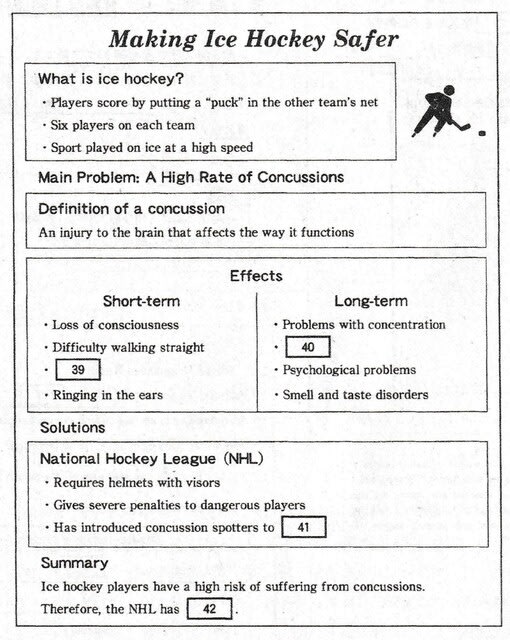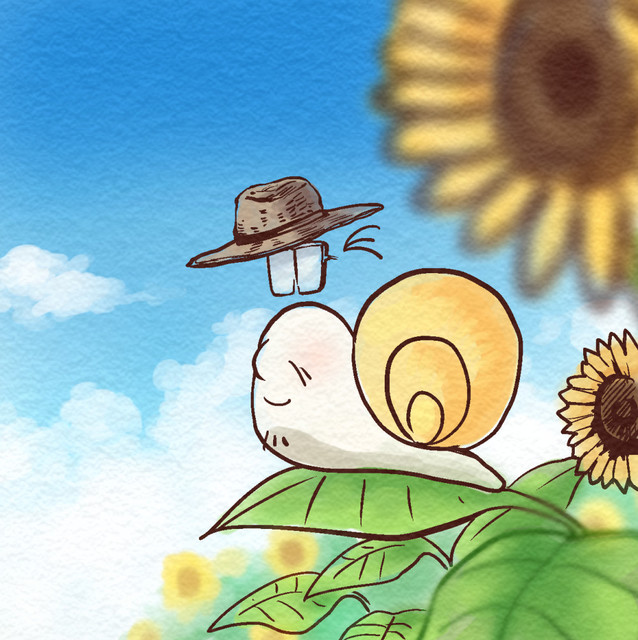・59.0 大學入學共通テスト2021 英語(リーディング)第6問
A
You are working on a class project about safety in sports and found the following article. You are reading it and making a poster to present your findings to your classmates.
Making Ice Hockey Safer
Ice hockey is a team sport enjoyed by a wide variety of people around the world. The object of the sport is to move a hard rubber disk called a “puck” into the other team’s net with a hockey stick. Two teams with six players on each team engage in this fast-paced sport on a hard and slippery ice rink. Players may reach a speed of 30 kilometers per hour sending the puck into the air. At this pace, both the players and the puck can be a cause of serious danger.
The speed of the sport and the slippery surface of the ice rink make it easy for players to fall down or bump into each other resulting in a variety of injuries. In an attempt to protect players, equipment such as helmets, gloves, and pads for the shoulders, elbows, and legs, has been introduced over the years. Despite these efforts, ice hockey has a high rate of concussions.
A concussion is an injury to the brain that affects the way it functions; it is caused by either direct or indirect impact to the head, face, neck, or elsewhere and can sometimes cause temporary loss of consciousness. In less serious cases, for a short time, players may be unable to walk straight or see clearly, or they may experience ringing in the ears. Some believe they just have a slight headache and do not realize they have injured their brains.
In addition to not realizing the seriousness of the injury, players tend to worry about what their coach will think. In the past, coaches preferred tough players who played in spite of the pain. In other words, while it would seem logical for an injured player to stop playing after getting hurt, many did not. Recently, however, it has been found that concussions can have serious effects that last a lifetime. People with a history of concussion may have trouble concentrating or sleeping. Moreover, they may suffer from psychological problems such as depression and mood changes. In some cases, players may develop smell and taste disorders.
The National Hockey League (NHL), consisting of teams in Canada and the United States, has been making stricter rules and guidelines to deal with concussions. For example, in 2001, the NHL introduced the wearing of visors-pieces of clear plastic attached to the helmet that protect the face. At first, it was optional and many players chose not to wear them. Since 2013, however, it has been required. In addition, in 2004, the NHL began to give more severe penalties, such as suspensions and fines, to players who hit another player in the head deliberately.
The NHL also introduced a concussion spotters system in 2015. In this system, NHL officials with access to live streaming and video replay watch for visible indications of concussion during each game. At first, two concussion spotters, who had no medical training, monitored the game in the arena. The following year, one to four concussion spotters with medical training were added. They monitored each game from the League’s head office in New York. If a spotter thinks that a player has suffered a concussion, the player is removed from the game and is taken to a “quiet room” for an examination by a medical doctor. The player is not allowed to return to the game until the doctor gives permission.
The NHL has made much progress in making ice hockey a safer sport. As more is learned about the causes and effects of concussions, the NHL will surely take further measures to ensure player safety. Better safety might lead to an increase in the number of ice hockey players and fans.

問1 Choose the best option for [ 39 ] on your poster.
① Aggressive behavior
② Difficulty thinking
③ Personality changes
④ Unclear vision
問2 Choose the best option for [ 40 ] on your poster.
① Loss of eyesight
② Memory problems
③ Sleep disorders
④ .Unsteady walking
問3 Choose the best option for [ 41 ] on your poster.
① allow players to return to the game
② examine players who have a concussion
③ fine players who cause concussions
④ identify players showing signs of a concussion
問4 Choose the best option for [ 42 ] on your poster.
① been expecting the players to become tougher
② been implementing new rules and guidelines
③ given medical training to coaches
④ made wearing of visors optional


















